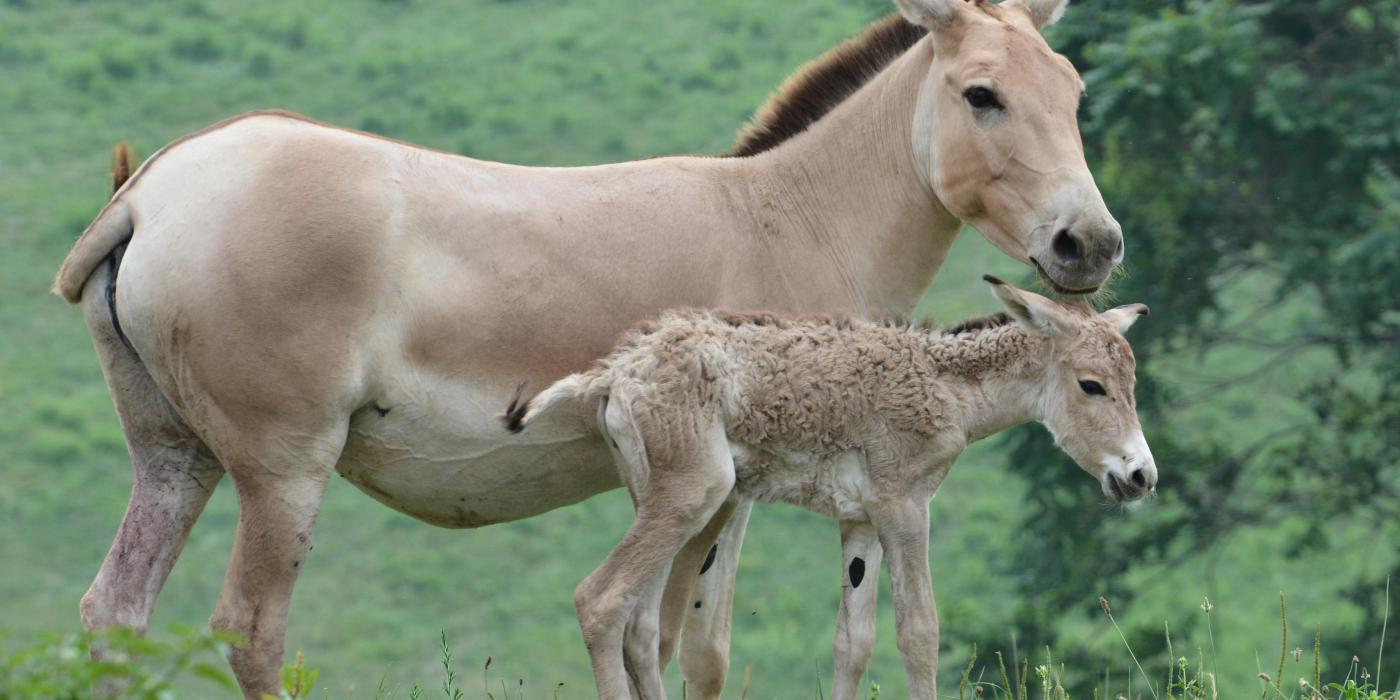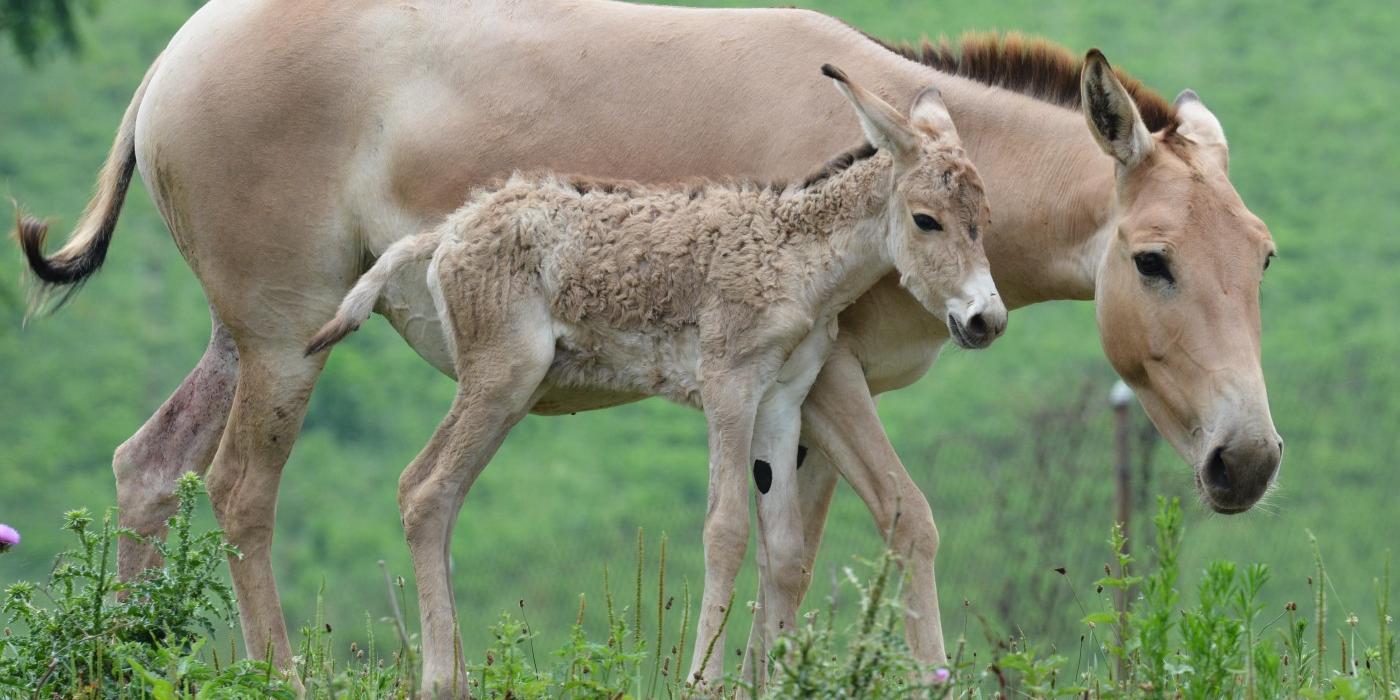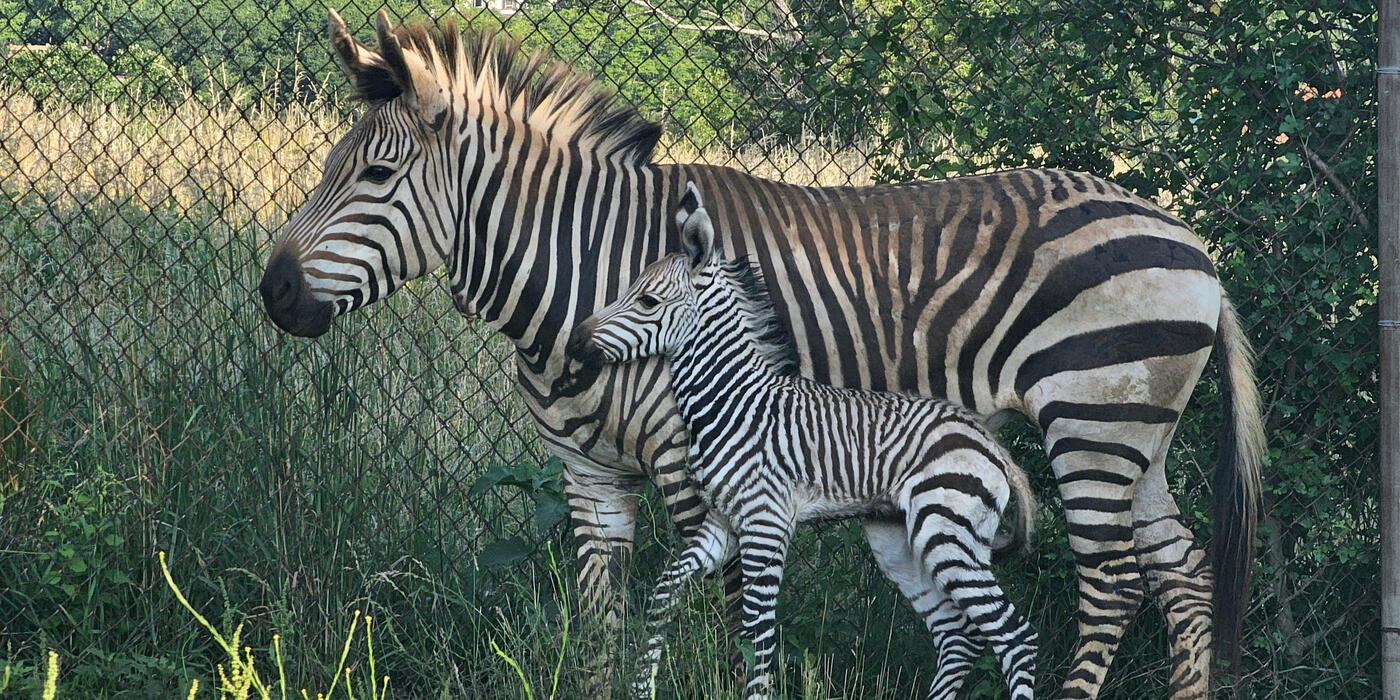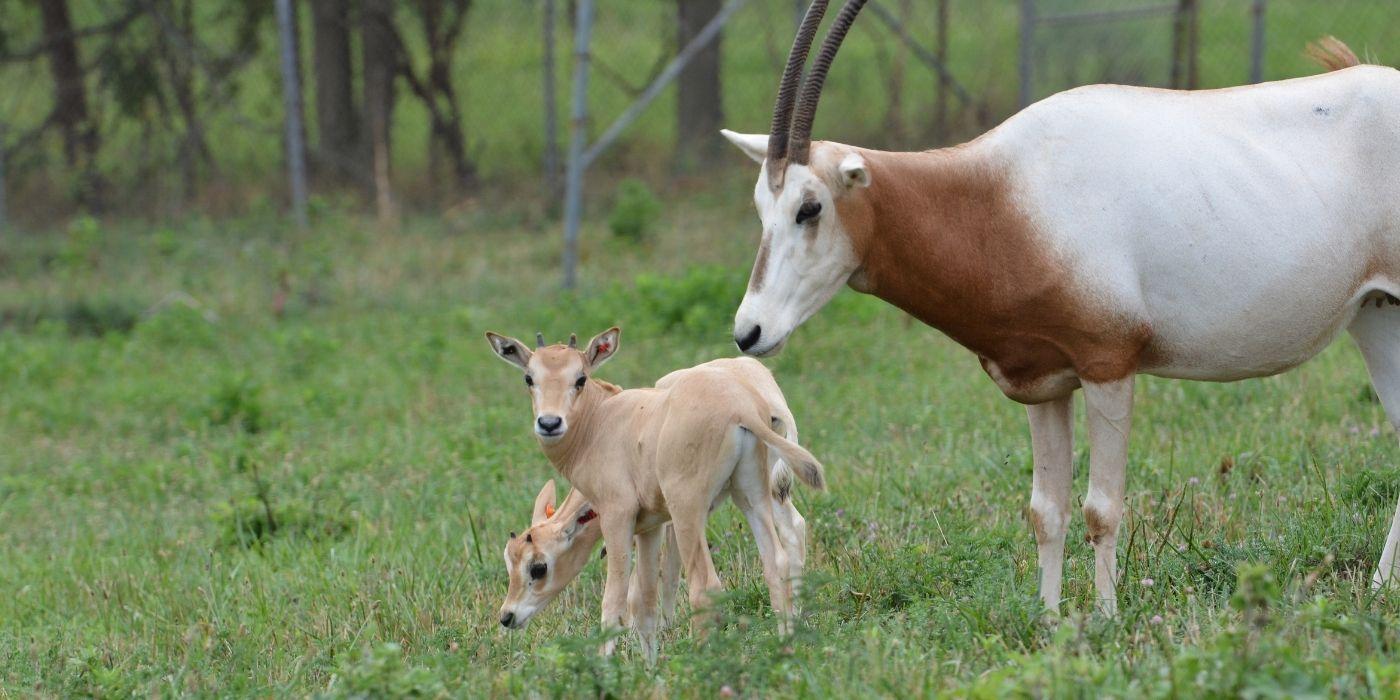Meet Our Sweet and Rambunctious Persian Onager Filly
On the heels of celebrating our Hartmann’s mountain zebra Yipes’ first birthday, the Smithsonian Conservation Biology Institute’s ungulate team happily welcomed another new addition. During our morning rounds July 21, we discovered our expectant Persian onager—a 10-year-old female named Sayeh—had given birth overnight to a female foal. By the time we arrived on the scene, she had already got the hang of standing, walking and nursing. Thankfully, the filly appeared to be healthy and strong. For the first few days, she stuck close by Sayeh’s side.
Over the past month, our filly has become more confident and brave. She is very sweet-natured and curious about the world around her. She even made a new friend! When Sayeh introduced her daughter to the herd, 2-year-old female Riley showed a lot of interest in her new herd mate. They spend a lot of time rambunctiously running around and exploring their pasture together.
Every Persian onager birth is cause for celebration since the species is considered endangered by the International Union for Conservation of Nature. The process of breeding them, however, can be tricky. The window when females are in estrus (able to become pregnant) is very short—only 3 to 5 days. To increase the odds of having a successful pregnancy, we study our onagers’ reproductive cycle hormones via urine samples.
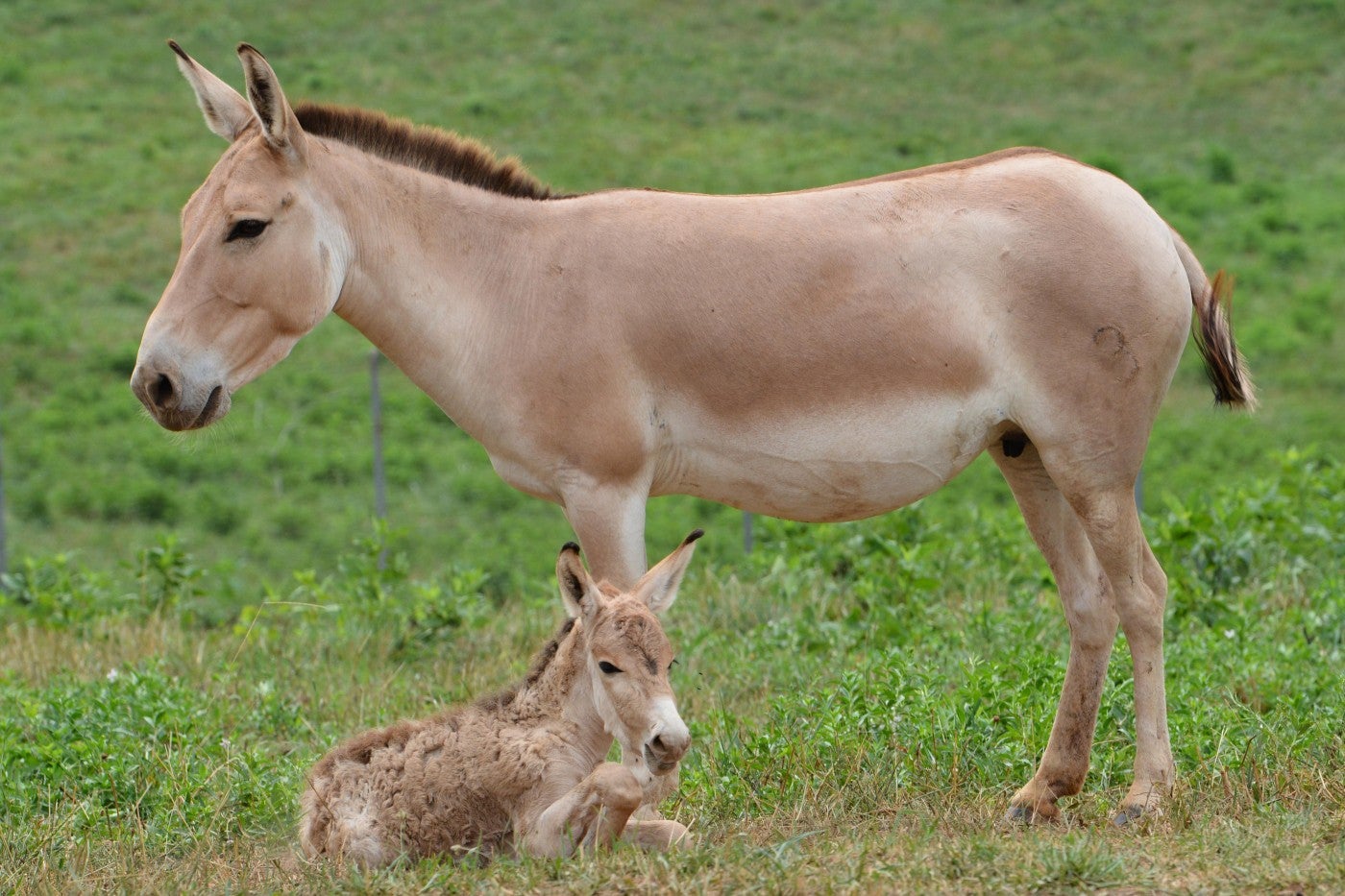
Our team has trained the onagers to voluntarily urinate on cue, allowing us to easily collect a sample for our endocrine lab to analyze. For doing the behavior asked of them, our onagers receive positive reinforcement in the form of a favorite food: apple biscuits. This training was a non-invasive and stress-free way for us to collect Sayeh’s hormones for analysis.
Once we determined Sayeh was in estrus, we put her and the filly’s father—a 14-year-old stallion named Mandrake—together for breeding. This training also enabled us to confirm Sayeh’s pregnancy and keep track of its progress. Typically, gestation lasts 365 to 368 days. Our newest filly is one of 48 Persian onagers born at SCBI since the breeding program began in 1975.
Fun Facts About Persian Onagers
- Onagers, in general, have very strong personalities. They are quite smart and irascible, so they often let keepers know what they are thinking in no uncertain terms! But, that also makes working with them and earning their trust a very rewarding part of our job.
- One of their most amazing adaptations is their ability to withstand extreme temperatures. Persian onagers are native to the semi-desert region of Iran, where it can get up to 120 degrees Fahrenheit during the day. In this environment, leaves and grasses provide the onagers with most of the water they need to survive, which distinguishes them from other equine species. Whereas a Przewalski’s horse may drink up to 12 gallons of water a day, a Persian onagers may drink only 1.5 gallons.
- One way to differentiate Asiatic wild asses from most domestic horses is by their “dun stripe”—a dark brown stripe that runs down their spine, from mane to tail. Persian onagers, Przewalski’s horses and domestic donkeys all have this trait.
This story appears in the September 2021 issue of National Zoo News. Want adorable animals in your inbox? Sign up for Zoo Emails!
Related Species:
